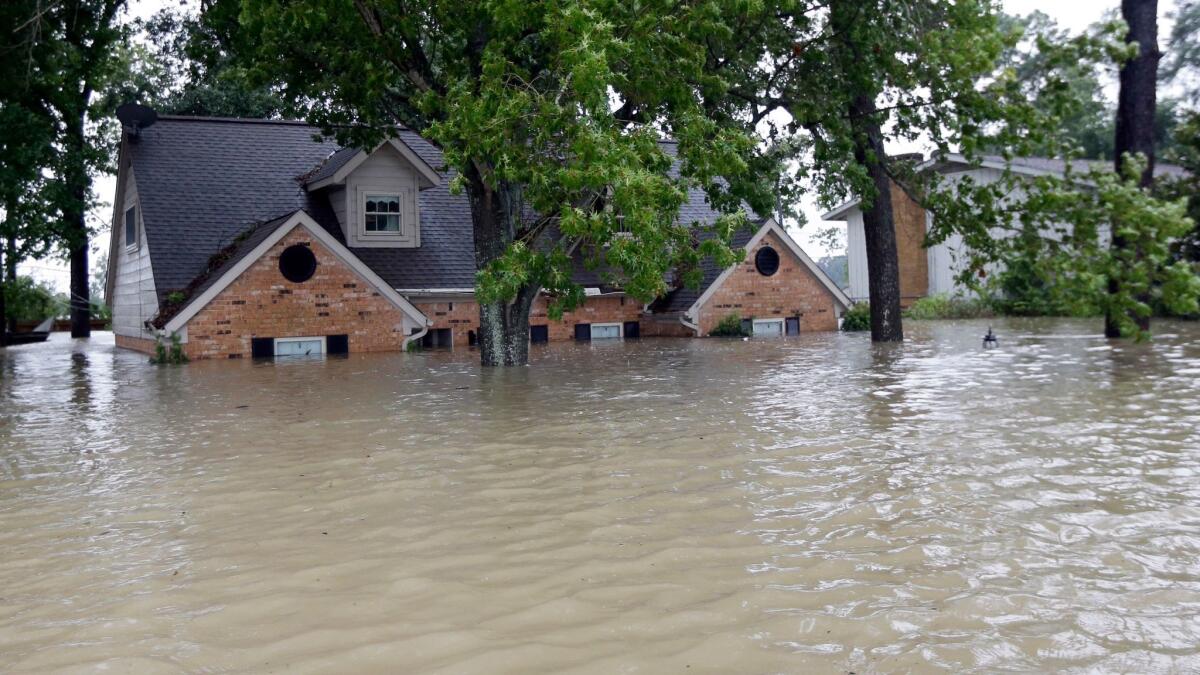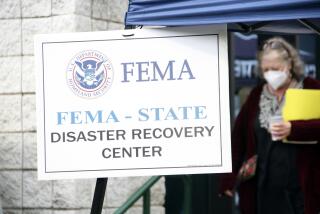Op-Ed: Nature isnât on a rampage. That would be us.

In 1927, as the muddy waters of the Mississippi River began to recede from what was then the deadliest storm-related flood in American history, blues musicians wailed their sorrow and rage. Blind Lemon Jefferson recorded his âRising High Water Bluesâ that May:
Children stand there screamin: Mama we ainât got no home
Awww, Mama we ainât got no home
Papa says to the children, âBackwater left us all alone.â
The gut-wrenching disaster, and others that swept through the Mississippiâs fast-populating basin in the early 20th century, led to more blues devoted to rain and flood than any other natural event. But Papa was wrong: It wasnât the water that left families homeless and alone.
Under pressure to allow development of the Mississippiâs natural floodplain that once absorbed nearly half the nationâs rainfall, Congress had ignored Progressive Era wisdom that flood control required a mix of reservoirs, levees and preserved wetlands and forests. Instead, lawmakers caved to a levees-only strategy that ushered in what the flood-law scholar Christine A. Klein calls âa century of unnatural disaster.â
By putting the evil eye on nature, we take it off the humans who have science in their hands, but hold it behind their backs.
Weâve long sung our blues, conjured our demons and imagined our enemies in deluges and sky-darkening storms. Even today we imbue the atmosphere with evil intention, like how we once saw swamps as villainous forces. This way of thinking about storms leaves us feeling helpless and also off the hook: The problem is the weather, rather than human decisions that impede safety and drainage, or deny the climate science we need to better understand the atmosphere, including record-breaking tropical storms.
Hurricanes Harvey and Irma did not surprise climate scientists, who have grown hoarse warning that the warming seas and atmosphere will amplify hurricanes and other natural disasters. And yet, media and meteorologists dubbed the exceptional cyclones âmonsters,â as if they were spun from a fairy tale rather than hotter-than-usual ocean waters. We have cried âbeastâ and âzombie storm,â watching Irma break global wind speed records and Harvey the U.S. record for greatest rainfall in a single storm. Fear, perhaps, returns us to the ancient superstitions that named these storms after Huracan, the Carib god of evil.
In his new film on the climate change crisis, âAn Inconvenient Sequel,â Al Gore describes the extremes that have drowned cities from Baton Rouge to Bangladesh as ârain bombs,â suggesting an angry god throwing down torrential rains and ruinous floods.
Last year, when Stu Ostro, a meteorologist with the Weather Channel, saw a smiling skull in Hurricane Matthew on infrared satellite imagery, its creepy eye over Haiti, he posted the âsinister-looking faceâ to Twitter. The skull went viral. The Weather Channel, CNN and the Atlanta Journal-Constitution all assigned reporters to the âstory.â Many TV broadcast meteorologists took precious air time to feature it.
We writers are not immune. I was taken aback by this line in a favorite reporterâs story: âThe weather appears to be on an unprecedented climate-change-induced rampage.â
But weather is not sinister. It is not on a rampage. It is not the bomb.
In the history of humans and their climate, such misplaced attribution has led to our most profound mistakes. In medieval times, people became convinced during the weather extremes of the Little Ice Age that witches were conjuring the storms. As frightening weather intensified, so did witch trials, torture and executions of thousands of innocent people accused of âweather magic.â
Two hundred years later, British parliament quashed pioneering storm forecasts under pressure from those who thought that the ability to foretell rain was black magic â a fear flamed by ship salvagers who worried predictions would cut into shipwrecks, and their profits. The brilliant Royal Navy vice-admiral who developed the advanced warnings, Robert Fitzroy, committed suicide in the wake of the merciless doubt.
In mid-20th century America, from the Sacramento-San Joaquin River Delta to the Everglades of Florida, federal engineers hyped up water as âthe fierce, uncompromising enemy.â The propaganda film âWaters of Destinyâ breathlessly describes the Army Corps of Engineersâ massive replumbing of the Everglades to save South Florida from âdevastating, ruining, havoc-wreaking rains.
In fact, it was the compulsion to vanquish an enemy rather than live in waterâs balance that put future generations in grave danger.
Soft rains, torrents and even hurricanes are part of that balance. Hurricanes are essentially giant engines that transfer heat from sea to atmosphere. Scientists are working hard to understand the extent to which global warming may fuel them. Yet at this most crucial time, the Trump administration has purged climate experts, research funding and even the science itself from public websites as if we were back in the witchcraft days.
Lessening the blows of both storm disasters and climate change requires us to see the cycle rather than the Cyclops. Failure to do so will cause more of the same catastrophic destruction and human suffering now occurring in Texas, the Caribbean and Florida.
We are not powerless. Unlike hapless children in a blues song or a fairy tale, there is plenty we can do. EPA Administrator Scott Pruitt has said that a hurricane emergency is not the time to talk about climate change. To the contrary, it is just the time to draw the nation to the conversation. In recovery mode, we can remake cities to better withstand storms â in ways that help us reduce the carbon emissions warming the planet. We can plan retreat from those parts of the coast becoming unsafe for people. And we can hike investment in the science of climate change so that we can understand, rather than fear.
By putting the evil eye on nature, we take it off the humans who have science in their hands, but hold it behind their backs. The rain is not the bomb. The storms are not the monsters. The weather is not on a rampage. That would be us.
Cynthia Barnett is the author of three books on water including âRain: A Natural and Cultural History.â She is environmental journalist in residence at the University of Florida College of Journalism and Communications.
Follow the Opinion section on Twitter @latimesopinion or Facebook.
More to Read
A cure for the common opinion
Get thought-provoking perspectives with our weekly newsletter.
You may occasionally receive promotional content from the Los Angeles Times.










